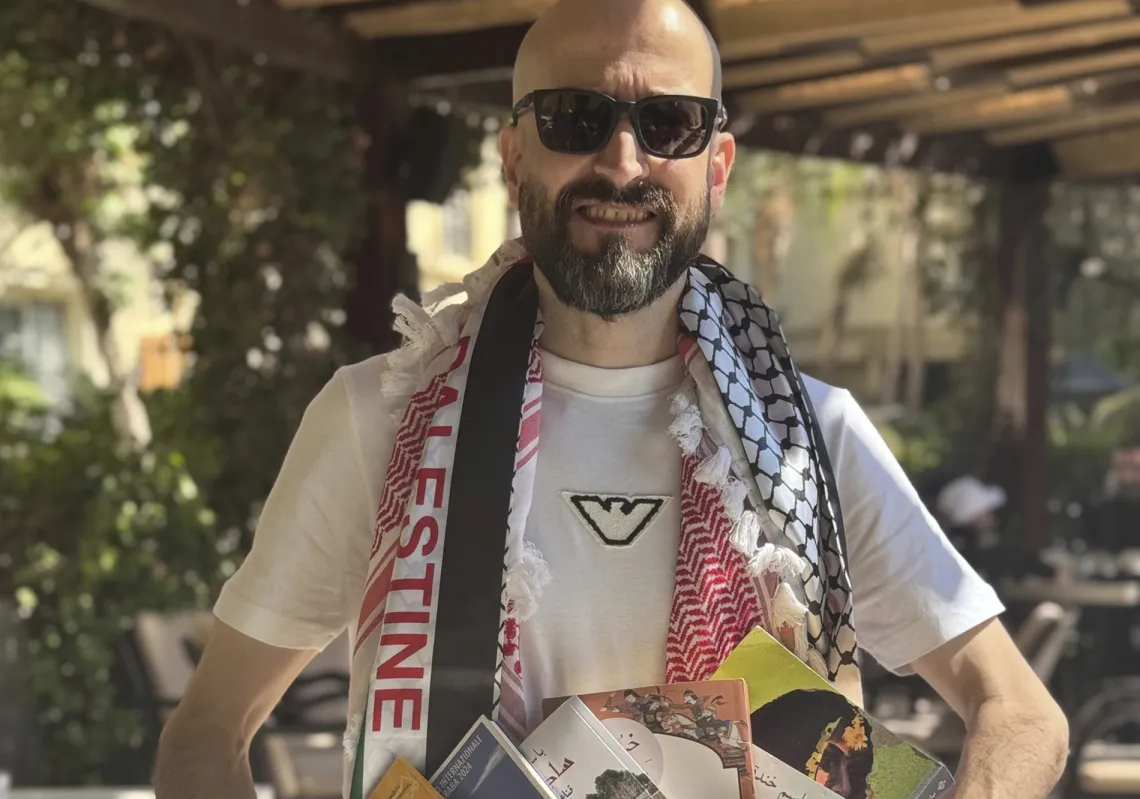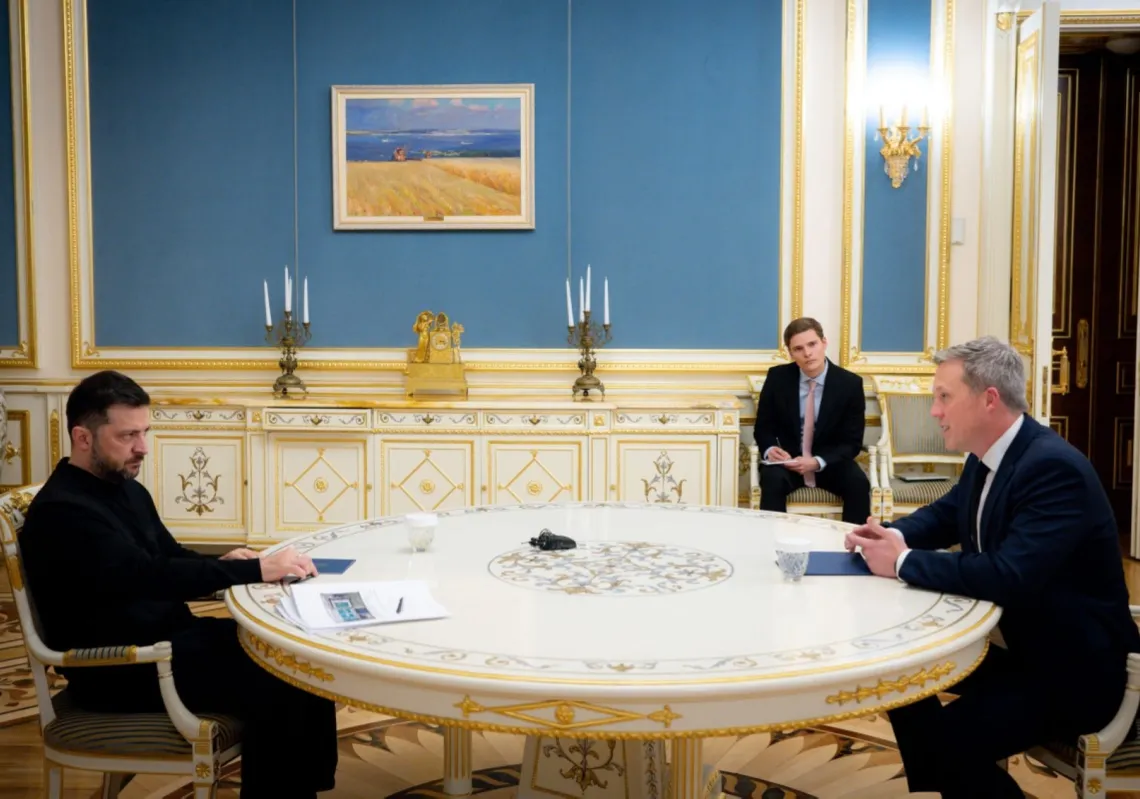A week after the International Court of Justice ordered restraint from the Israelis in the Palestinian city of Rafah, that is not what Palestinians seeking shelter there see. It has been three weeks since the Israeli military geared up for its latest big ground operation in the Gaza Strip. Its troops are now in the city centre, its aircraft are bombing tent camps, and its tanks now patrol the land between Rafah and Egypt.
The Rafah Crossing (Gaza to Egypt) and the nearby Kerem Shalom Crossing (Gaza to Israel) are the only road links Gaza’s 2.3 million people have with the outside world. The Israelis always controlled the latter. Now, they control the former, too. Al Majalla looks at the implications, including for on-the-ground reporting from Rafah, visiting a key medical facility and hearing from some of the displaced people caught up in this latest phase of the seven-month war.
Driving through war
I drove east from the remote southwest of Rafah city along the road adjacent to the Egyptian border, but it was eerily devoid of the makeshift tents that had only recently bustled with displaced families who had lived there for the past five months. Cautious and anxious, I turned around and headed back for the main thoroughfare and the private Kuwait Specialised Hospital in Shabora, near the city centre.
As I travelled further into the city, the streets emptied. The cacophony of car horns, street vendors, and animal-drawn carts ferrying the displaced faded into silence. Upon arriving, the distant echo of tank gunfire reverberated through the air. Inside, the scene was stark. The hospital seemed deserted, with very few medics visible. Only a handful of staff had stayed, diligently attending to those who had managed to reach them.
The hospital somehow continued its vital role, providing essential first aid to the wounded before transferring them to field hospitals established by the Ministry of Health in Gaza, in the west of Rafah. A member of the hospital’s medical team told me that there had been a surge of patients due to the war, and that the closure of the Abu Yousef Al-Najjar Hospital east of Rafah meant that they were having to help more people.

Yet they are restricted. Ambulances cannot venture deep into the city due to the risk of being bombed or shelled by the Israeli army. This war has set a depressing precedent for ambulances, medical personnel, and even hospitals all targeted. After five hours in the vicinity, I felt I had to leave. As night fell, I made my way back to Khan Yunis, all the while observing the relentless progression of the Israeli army.
Crossings and corridors
With Israel’s troops advancing on Rafah city centre, both the Rafah Crossing and Kerem Shalom Crossing have been effectively shut to aid since 7 May. This has made a terrible situation worse. Kerem Shalom, in particular, has served as the primary gateway for vital supplies and humanitarian aid into the besieged territory. Shut for two months, it only reopened on 15 December and is currently the only entry point for food, medicine, and fuel.
The Israelis only reopened it after pressure from the United States, allowing trucks carrying mainly food to transport it to traders in the south, while access to central and northern Gaza remains restricted. Frustrated by Israeli intransigence at major crossings, the US military has been building a temporary pier to transport humanitarian aid by sea to the southwest of Gaza City under Israeli inspection and oversight.
This went live in mid-May, but in recent days, rough seas have damaged a section, which now needs to be repaired by the US military in Ashdod, which will take at least a week. For the two weeks in which the floating pier was operational, aid delivered via this route reached only the south. The Israeli army kept it out of Gaza City and the north of the Strip, despite the port being so close to the heart of Gaza City.
All eyes on Rafah
Before the ground operation in Rafah began, it was home to around 1.2 million Gazans, over two-thirds of them internally displaced. Concerned about the high population density and the risk to civilians, the US opposed the operation.
Washington warned against it but to no avail. Israel went in anyway, ordering the evacuation of residents from Rafah’s eastern areas, then those in the centre, up to 800,000 people in total. They were told to seek refuge in Nuseirat camp and Deir al-Balah in central Gaza, as well as the west of Khan Yunis, an area that has been completely destroyed by war.

I have also been displaced from Rafah. I lived there for five months, returning to western Rafah shortly after relocating to Khan Yunis. Along the way, I meet Atiya Hamid, 54, from Gaza City. He and his family were initially displaced to Nuseirat camp, then to Rafah. Now they have once again had to flee, this time to the Mawasi area, west of Khan Yunis.
“We are adrift,” he says, frustrated. “We are uncertain of where to seek refuge. Each displacement exacts a toll on us, both financially and emotionally, as we strive to rebuild our lives anew. Israel refuses to provide us with stability, citing the pretext of safeguarding our civilian lives.”
Atiya has faced challenges securing water for him and his children. His new temporary home has brought no relief. “Conditions here are considerably more congested. There is scarcely any room to erect a tent or even find a place to rest.
“The oppressive heat and humidity make staying in a tent unbearable. We are left in a state of uncertainty and despair. It is as if we are slowly ebbing away.”

Only bad options
Yahya Abdul Salam, 47, lives with his family in a tent west of Rafah and has no immediate plans to leave, not least because they cannot afford to. “We are at a loss as to where to turn,” he says.
“Thus far, we have had no directives to vacate. We hear the constant sound of shelling, explosions, and clashes. They could mandate evacuation at any moment. Yet, with so many tents in the designated relocation areas, we have no viable options.”
Unable to find work as a house painter, he cannot afford the relocation expenses, he says. It would cost more than $500 to transport and set up a new tent. It is money that he simply does not have.
The Israeli army is concentrating its military advance on the border area between the Gaza Strip and Egypt’s Sinai region. The Israeli army announced on Wednesday that it had gained full operational control of the 14km-long Philadelphi Corridor. Tanks and troops moved in behind a barrage of artillery and aerial bombardment in south-central Rafah, including a neighbourhood known as ‘Brazil’. Army bulldozers then demolished houses and infrastructure, including roads, as witnessed by journalists.
Deeper fears
Rafah’s city centre is several metres higher than its western area. Stationed in the heart of the city as it now is, the Israeli army has a vantage point over more than 6km to the west, all the way to the Mediterranean. Some families have left before being ordered to because they see the Israeli army’s encroachment and progression. There is reason to fear.
In both Gaza City and the northern Gaza Strip, the Israeli army’s advance led to devastation and death. In Rafah, 45 were killed when a tent camp was bombed on Sunday. One Rafah native, who asked to remain anonymous, told Al Majalla in Khan Yunis that he moved there with his family due to fears over safety.

“I have not raised my children, nurtured and protected them, only to see them perish under rubble in an instant,” he said. “There is no safe place in the Gaza Strip, but I found no solace within the confines of our home in Rafah.”
Of the ten Israeli army brigades operational within Gaza, five are currently engaged in Rafah and its various neighbourhoods, even though US President Joe Biden said an American “red line” was Israeli operations in Rafah’s “population centres”.
Speaking to CNN on 8 May, he said he told Israeli Prime Minister Benjamin Netanyahu that “if they go into Rafah, I’m not supplying the weapons”. This week, a White House spokesman said it had not met the test. For its part, Israel has released video and photos purportedly showing tunnels and rocket launch sites in Rafah’s east and south-east, along with footage alleging the presence of armed groups in schools and UN premises, to justify their targeting of any and all sites in Rafah without constraint, even places of shelter.
It seems inevitable that they will soon demand that yet more neighbourhoods and residential areas are abandoned by residents. Some have already half emptied. A handful have chosen to remain, despite the risks. The army appears resolute in its drive to advance, capture, and devastate the city of Rafah, justifying its actions by citing Hamas and other armed groups.
So much for Mr Biden’s red lines or the ICJ’s restraint order. The only order here is to evacuate.















